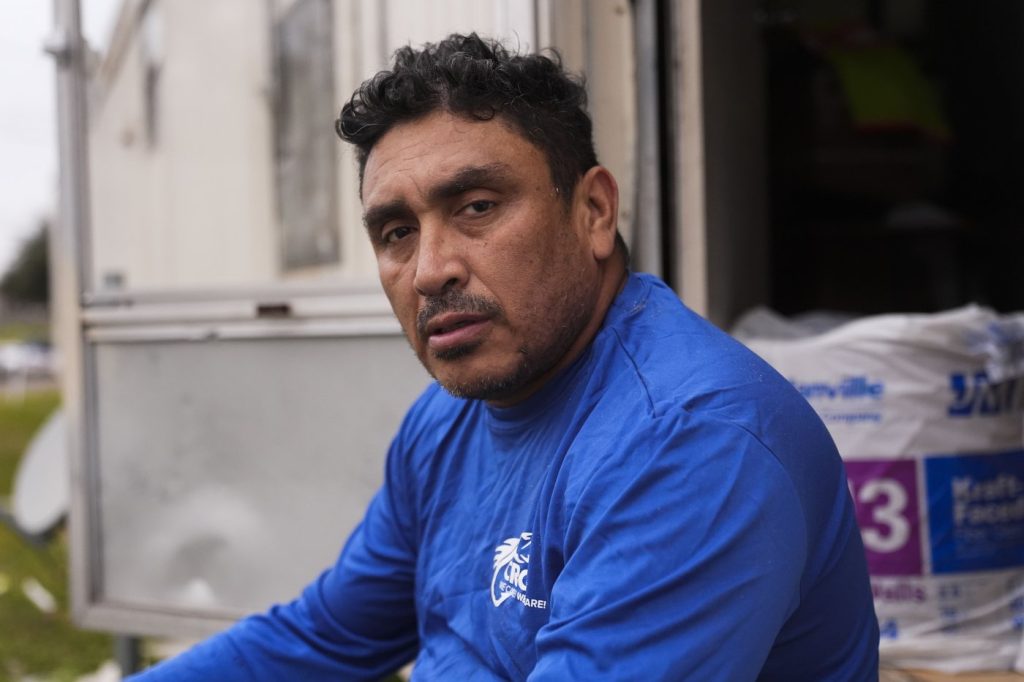In the wake of devastating wildfires in the Los Angeles area, a group of day laborers, including 55-year-old Alejandro from Mexico, have stepped up to help with cleanup efforts in affected neighborhoods like Pasadena and Altadena. The laborers, many of whom are undocumented, play a crucial role in restoring areas affected by climate-related disasters. Alejandro emphasizes their importance, stating that without such workers, the country would face a significant crisis.
As President-elect Donald Trump prepares to take office, he has expressed intentions to deport millions of undocumented immigrants. Advocates for immigrants warn that this could severely hinder the nation’s recovery from climate disasters. Many of these workers are skilled laborers who travel across the country to help rebuild communities after extreme weather events, showcasing the essential contributions of immigrant labor in this sector.
In 2023 alone, the U.S. experienced 28 climate disasters that resulted in damages exceeding $1 billion each, setting a record according to the National Oceanic and Atmospheric Administration. While estimates for the damage caused by recent wildfires in Los Angeles range from $250 billion to $275 billion, the labor force that addresses such calamities is predominantly composed of immigrants, many of whom lack legal status.
Pablo Alvarado, co-executive director of the National Day Laborer Organizing Network, highlights the vital role immigrants play as ‘second responders’ in rebuilding efforts. He notes that immigrant construction crews are the backbone of the recovery process following disasters, assisting in both manual labor and skilled trades. The reconstruction efforts seen after Hurricane Katrina in 2005 exemplified how the disaster restoration industry can expand and evolve, relying heavily on immigrant labor.
Workers like Mario Mendoza, who has been involved in disaster restoration since Hurricane Katrina, share harrowing experiences from their jobs. Mendoza recalls the grim realities of cleaning up homes after the storm, where he faced dangerous conditions and instances of exploitation due to his undocumented status. Many workers take on hazardous jobs without proper protective equipment, exposing them to severe risks in their efforts to help communities recover.
The construction industry, which employed approximately 10.8 million people in 2020, relies extensively on immigrant labor. The Center for American Progress estimates that almost 1.6 million undocumented immigrants worked in construction in 2021, particularly in states like Texas and California. With the potential for mass deportations under Trump’s administration, experts warn that it will significantly impact the workforce available for disaster recovery and rebuilding projects.
As the U.S. grapples with a housing shortage, questions loom about how the administration plans to handle this crisis amid a labor shortage in construction. Proposed solutions include expanding the H-2B visa program for temporary workers or encouraging U.S. citizens to enter labor-intensive roles, though skepticism remains about their willingness to take these jobs at competitive wages.
Recent developments in Florida following Hurricane Idalia illustrate the potential repercussions of strict immigration laws on recovery efforts. Many undocumented workers became too fearful to continue their jobs due to the passage of stringent immigration legislation, which jeopardized ongoing reconstruction efforts. Advocates for labor rights emphasize the challenges these individuals face, fearing deportation while trying to fulfill essential roles in recovery work.
Overall, the intertwined issues of immigration and disaster recovery highlight the critical contributions of undocumented workers in rebuilding efforts after climate-related disasters, illustrating their vital importance to the economy and community resilience.










